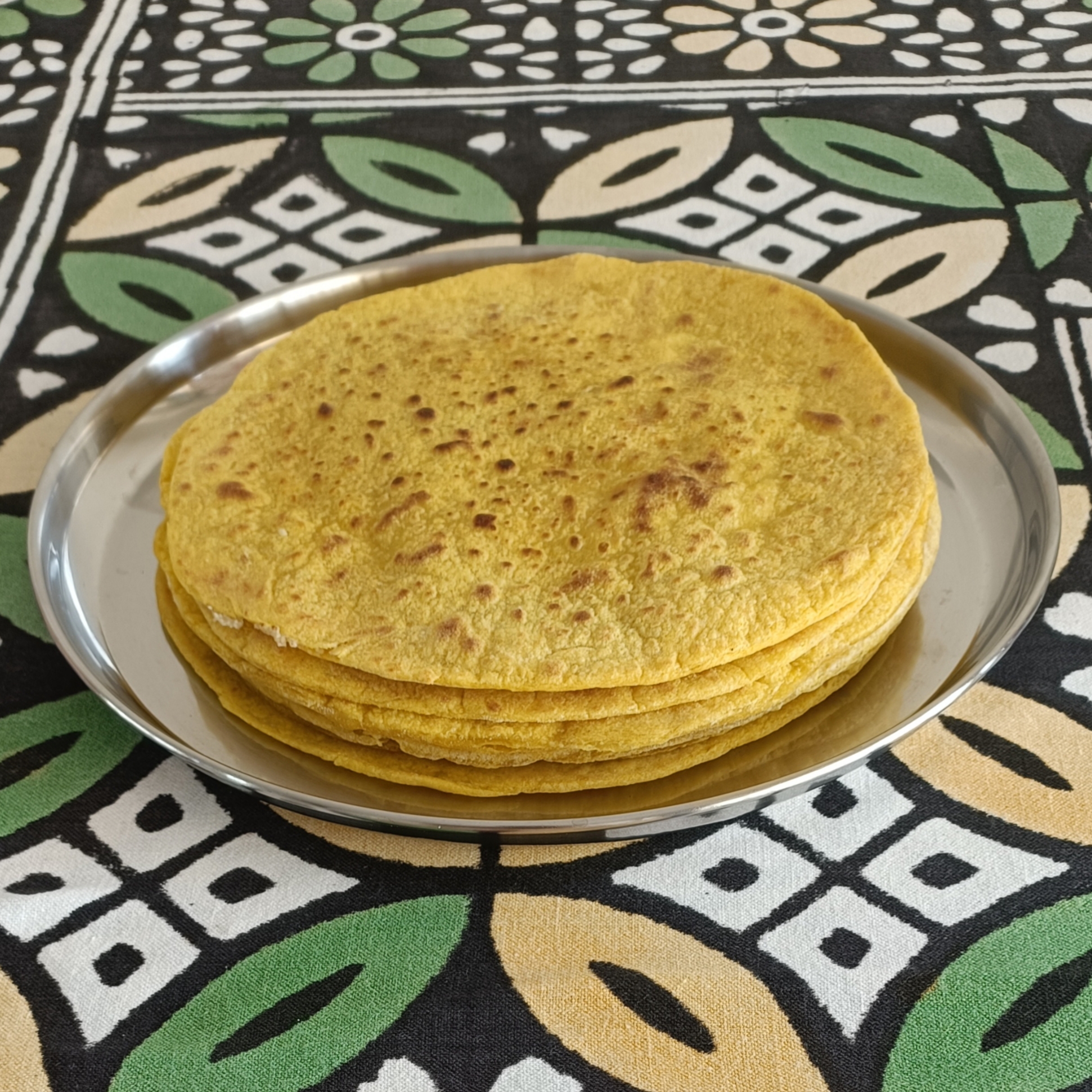Recipe: Darshana Muzumdar
Makes eight sanjiryos each 7-inch in diameter.
This sweet snack actually contains just two main ingredients: wheat and sugar. Both wheat and sugar are acid forming in the body leading to inflammation and lifestyle diseases. We advise people not to make this dish too often even though it is not only easy to make but also quite tasty.
Ingredients
- 1 cup wheat rava (semolina)
- 1¼ cups sugar
- 10 cardamoms
- 2 tbsp groundnut or coconut oil
For the Dough
- 1 cup maida (refined flour)
- ¼ tsp turmeric powder
- ½ cup water
- 1 tbsp groundnut oil
- More flour for dusting and rolling
Method
Filling
- Dry roast the rawa in a kadhai (Indian wok) or in a thick bottom steel pot on low heat for around 5 minutes or until it releases its aroma. Add the oil and roast it for about 2 to 3 more minutes.
- Add water and sugar. This will suddenly bubble up so be careful.
- Continue stirring and mixing it till it becomes a homogenous mixture.
- Continue cooking it until all the water has been absorbed and it gathers togeether into a soft ball.
- Cover and cook for a couple of more minutes.
- Remove the pot off the heat and allow the mixture to cool slightly. Add the cardamom powder and mix it well. Note: cardamom loses its flavour if heated.
- Cut the mixture into half, into half again and then half again to make eight portions. Keep this aside to use once the dough is ready.


Dough
- Mix the flour, turmeric powder, half the water and groundnut oil.
- Knead it well to form a soft pliant dough adding a little more water a teaspoon at a time.
- Cut the dough in half and then in half again and in half again to make eight portions. Roll each portion into balls and keep them covered with a towel.
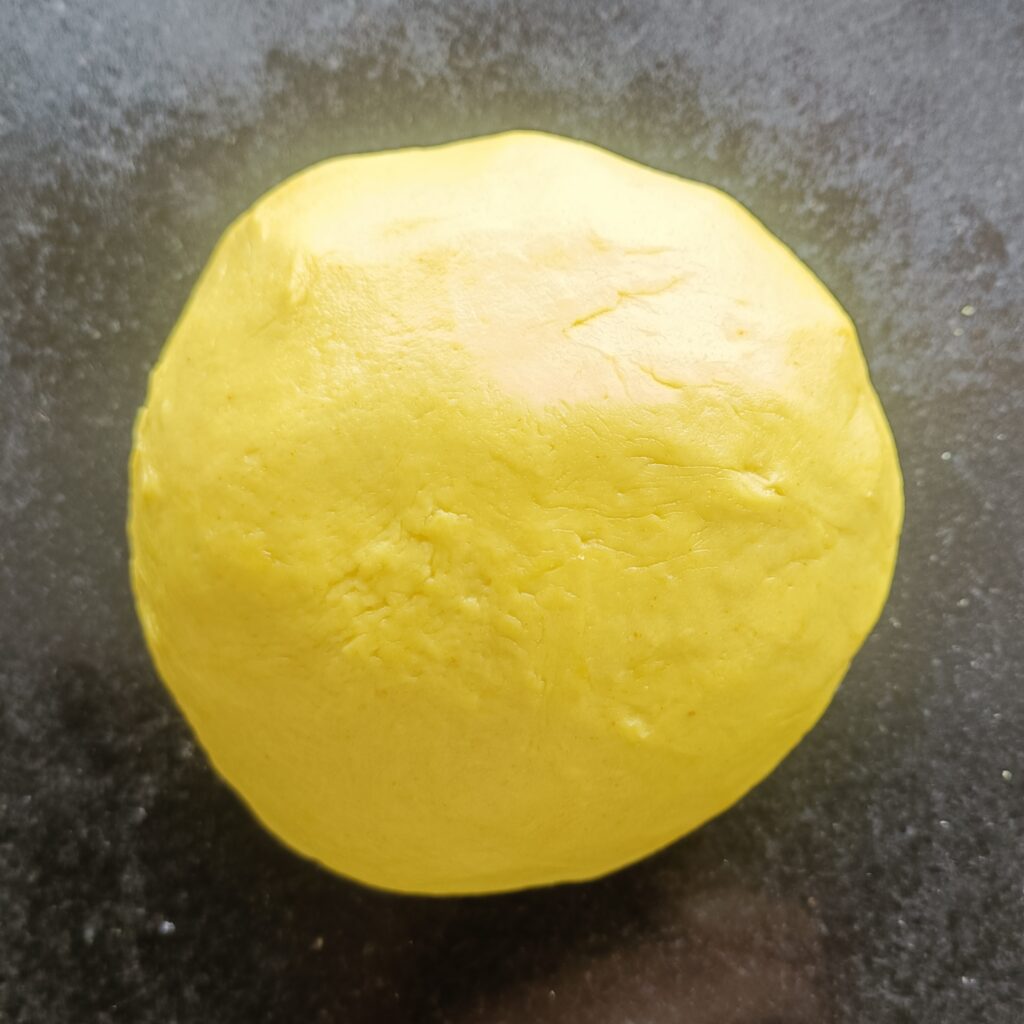
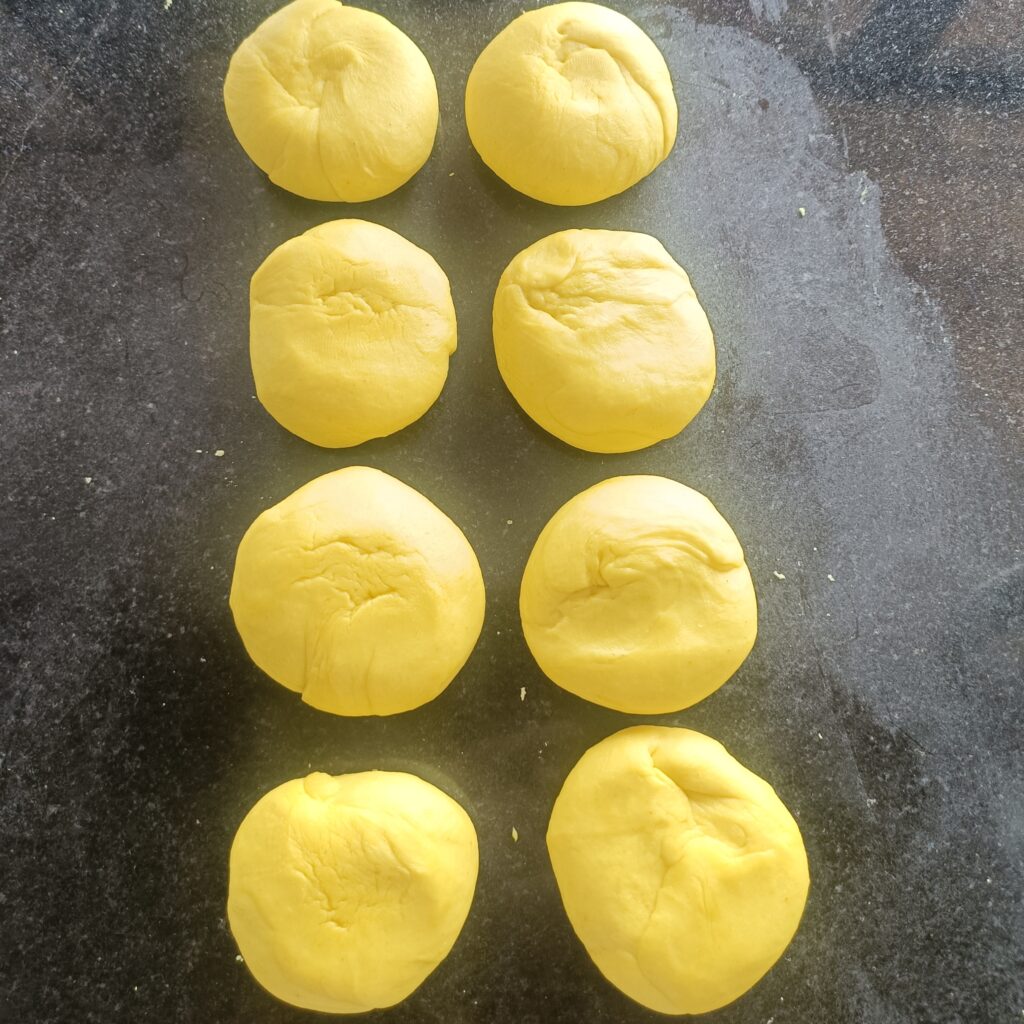
Sanjiryo
- Rub a little oil on your palm, take one ball of the dough and flatten it on your palm.
- Take a portion of the filling and place it in the centre of the flattened dough.
- Cover the filling with the dough evenly from all sides to form a ball.
- Flatten the ball slightly and roll it in the flour evenly.
- Dust the rolling board with a little flour and roll it out into a 9 inch diameter circle.
- Roast the sanjiryo on a dry hot frying pan until little brown spots appear on both sides. You can apply a little oil on one side of the sanjiryo if you wish and then fry that side until brown spots appear.
- Serve warm with a little dribble of coconut oil if you wish. The sanjiryos taste delicious even without the added oil.
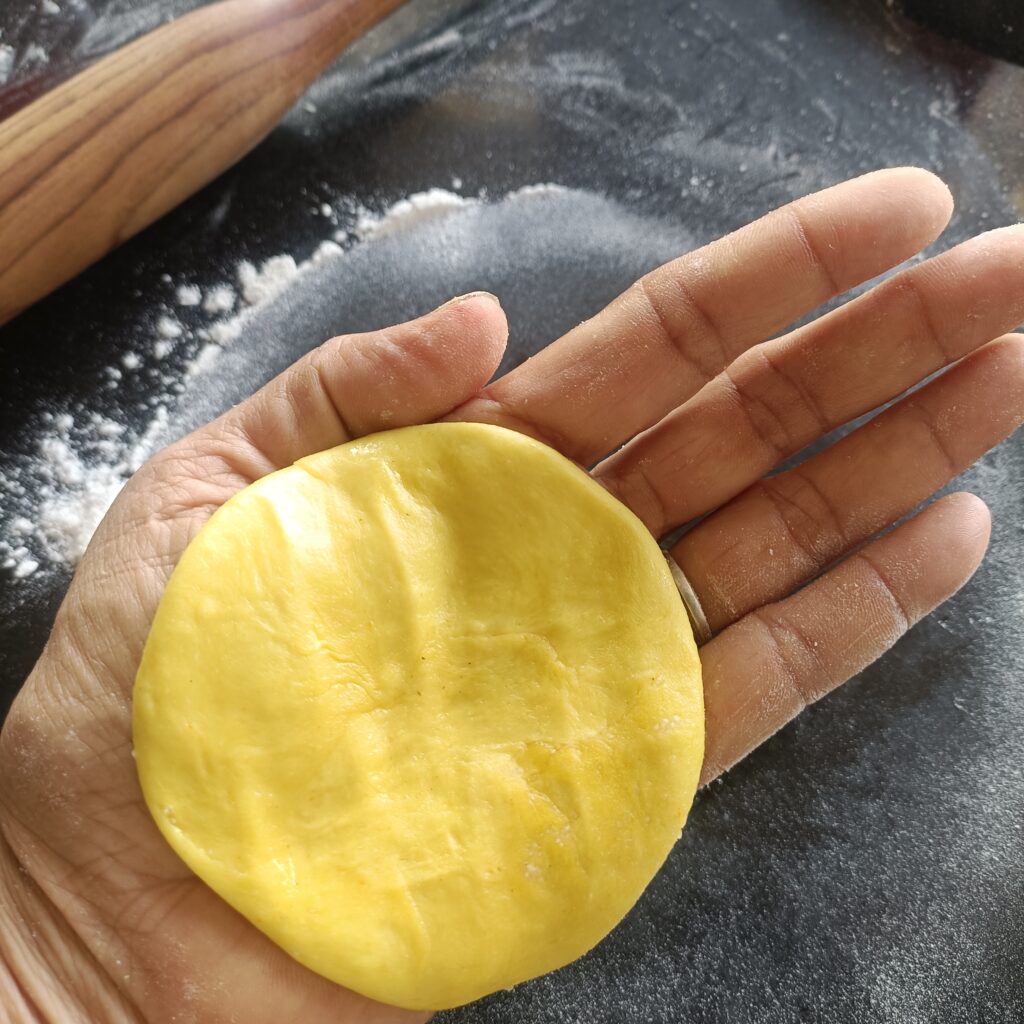
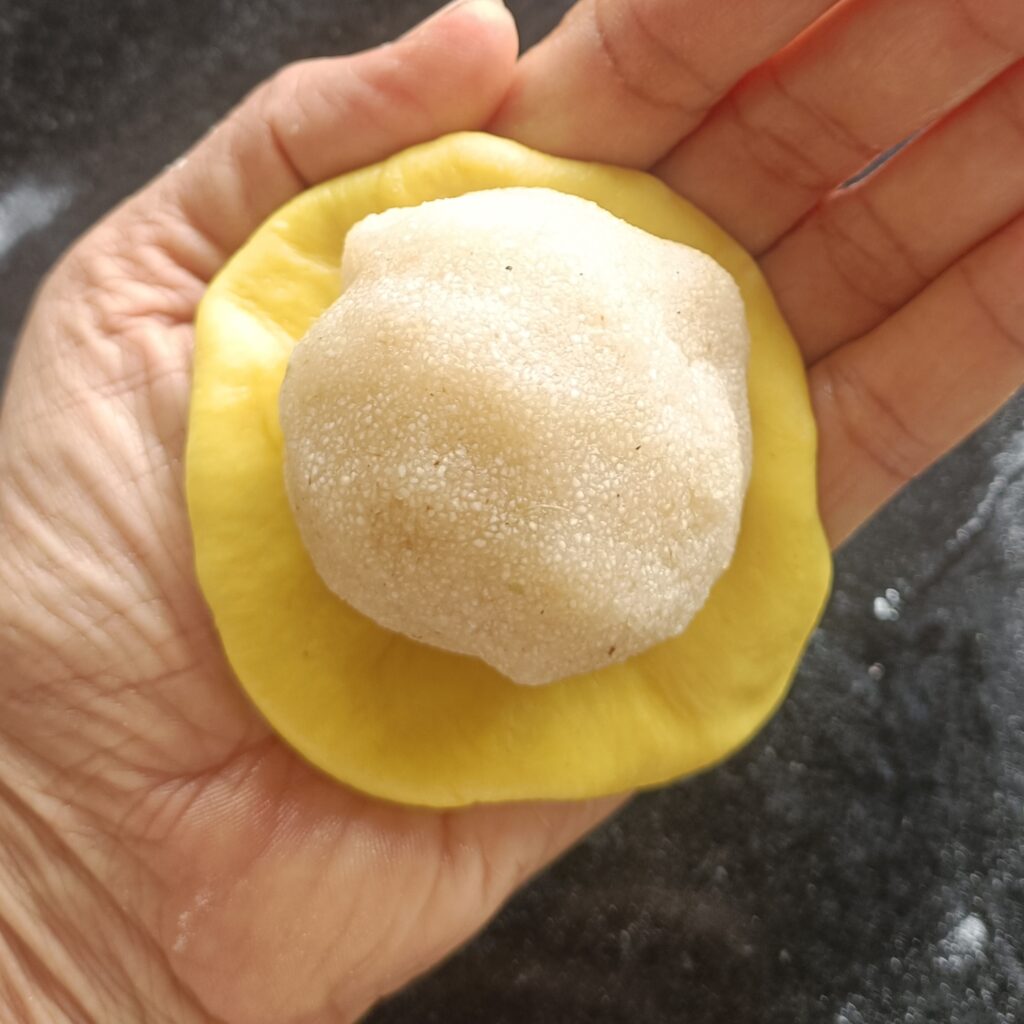
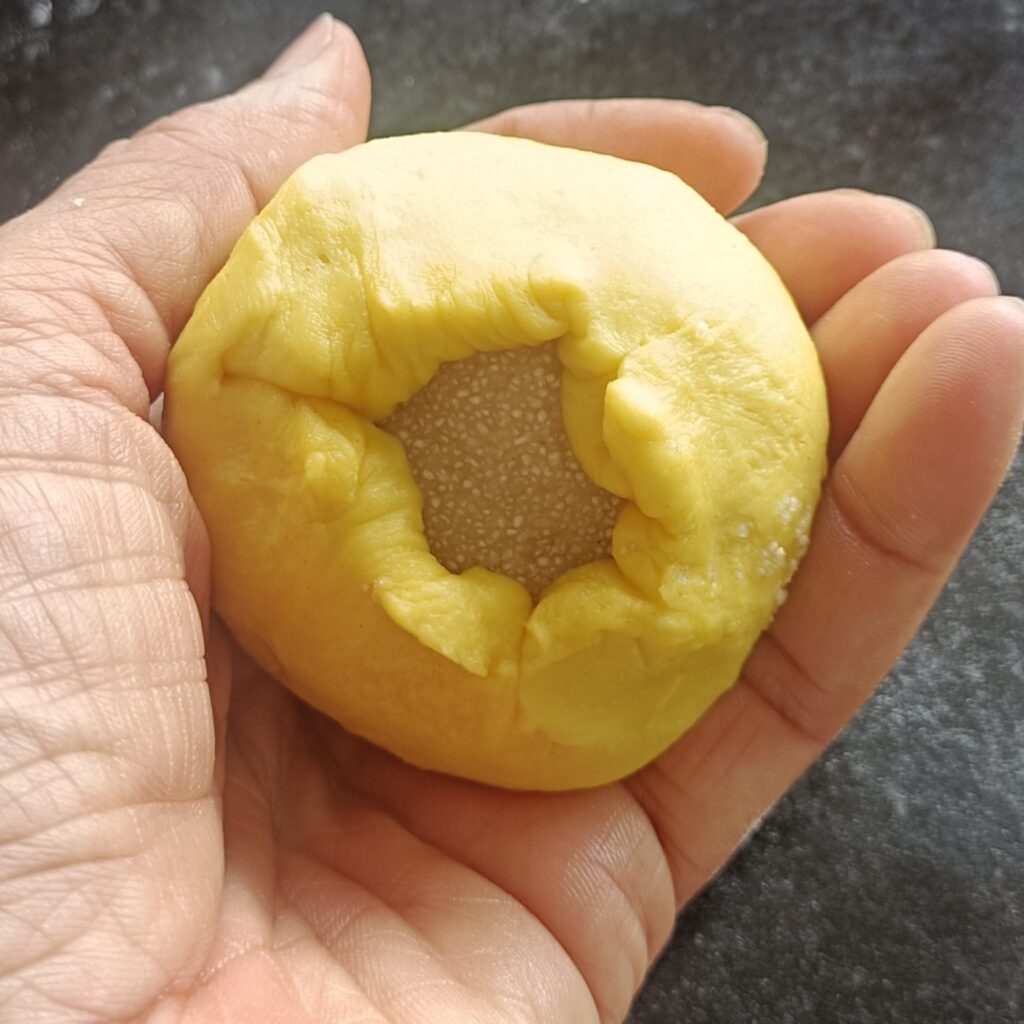
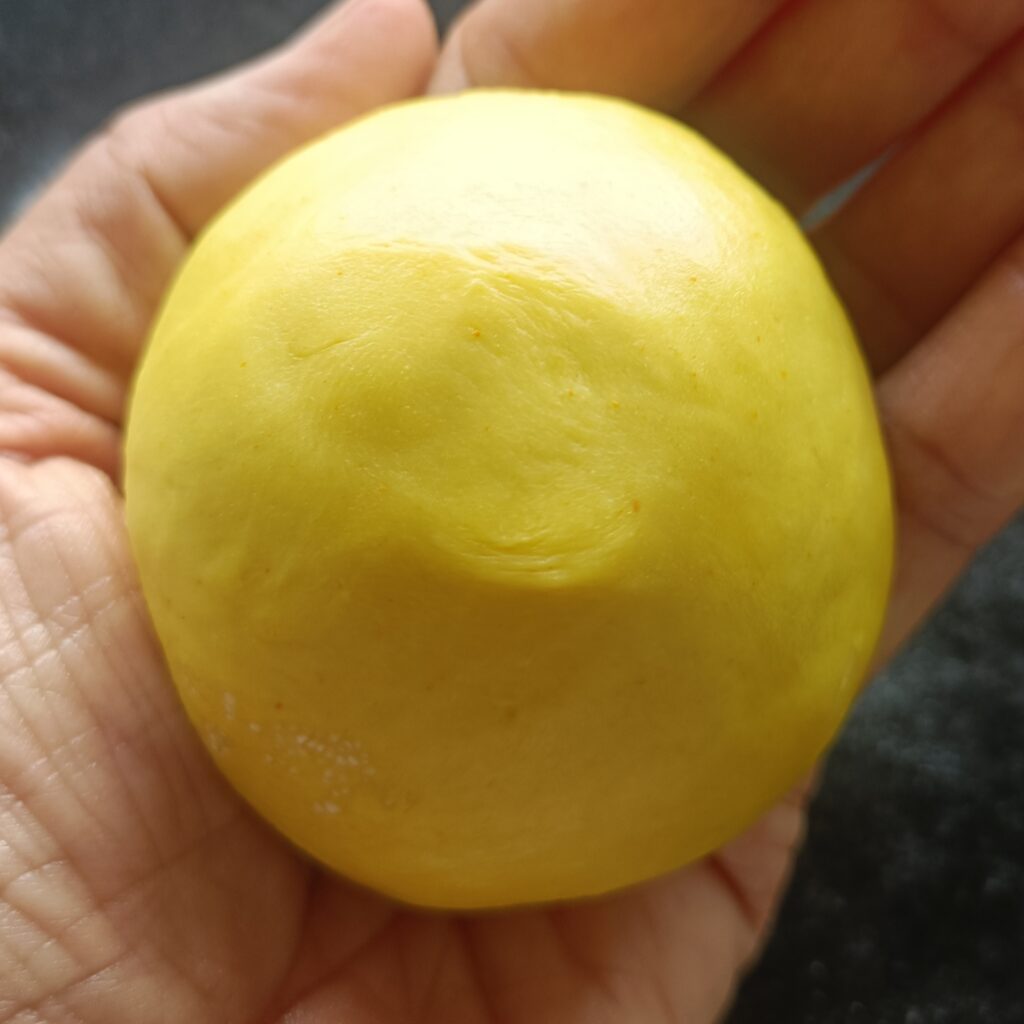
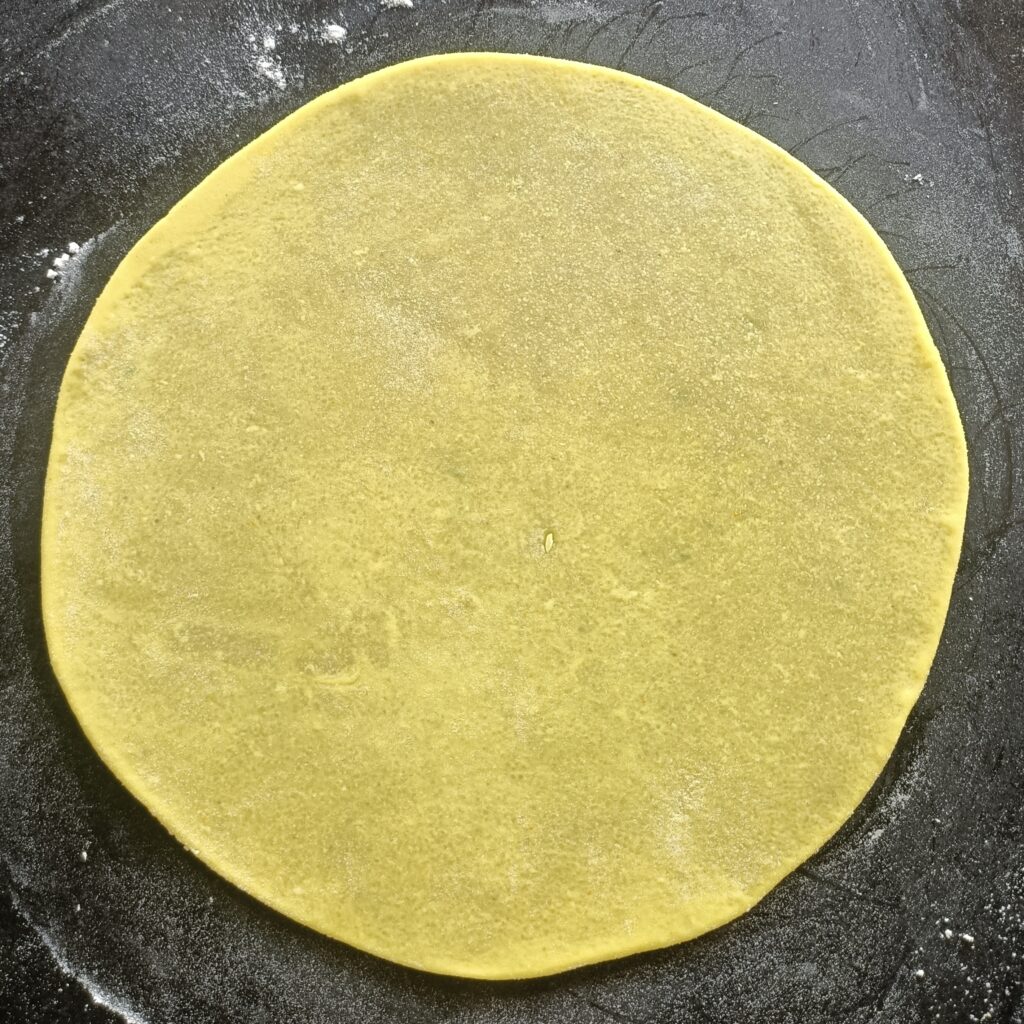
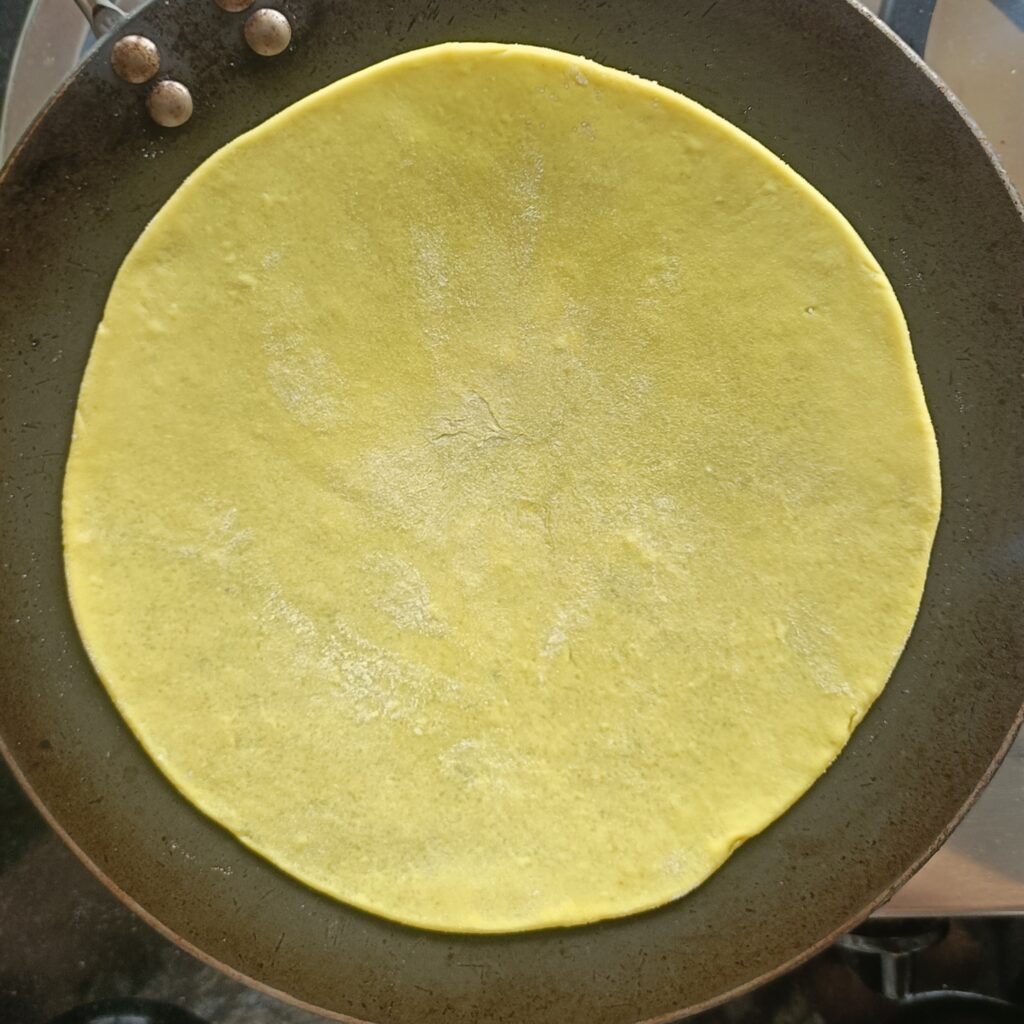
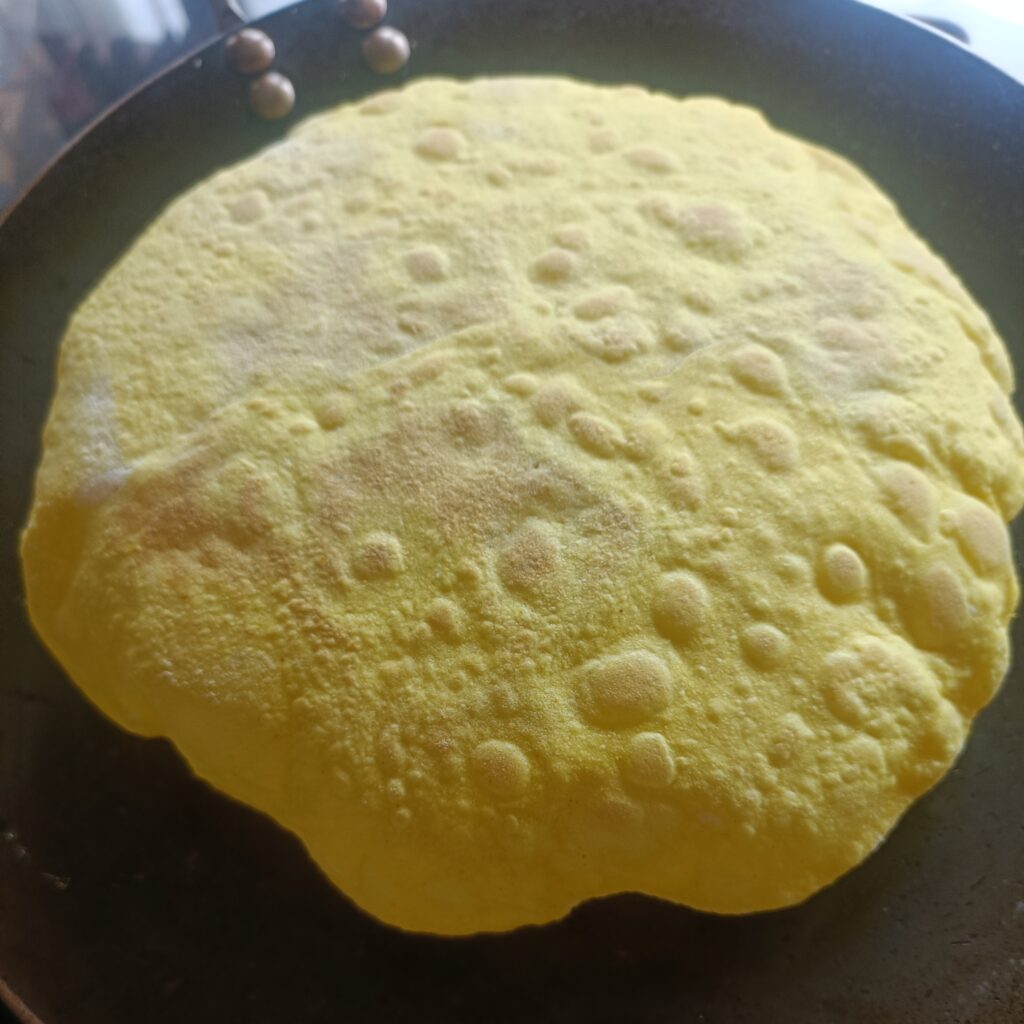
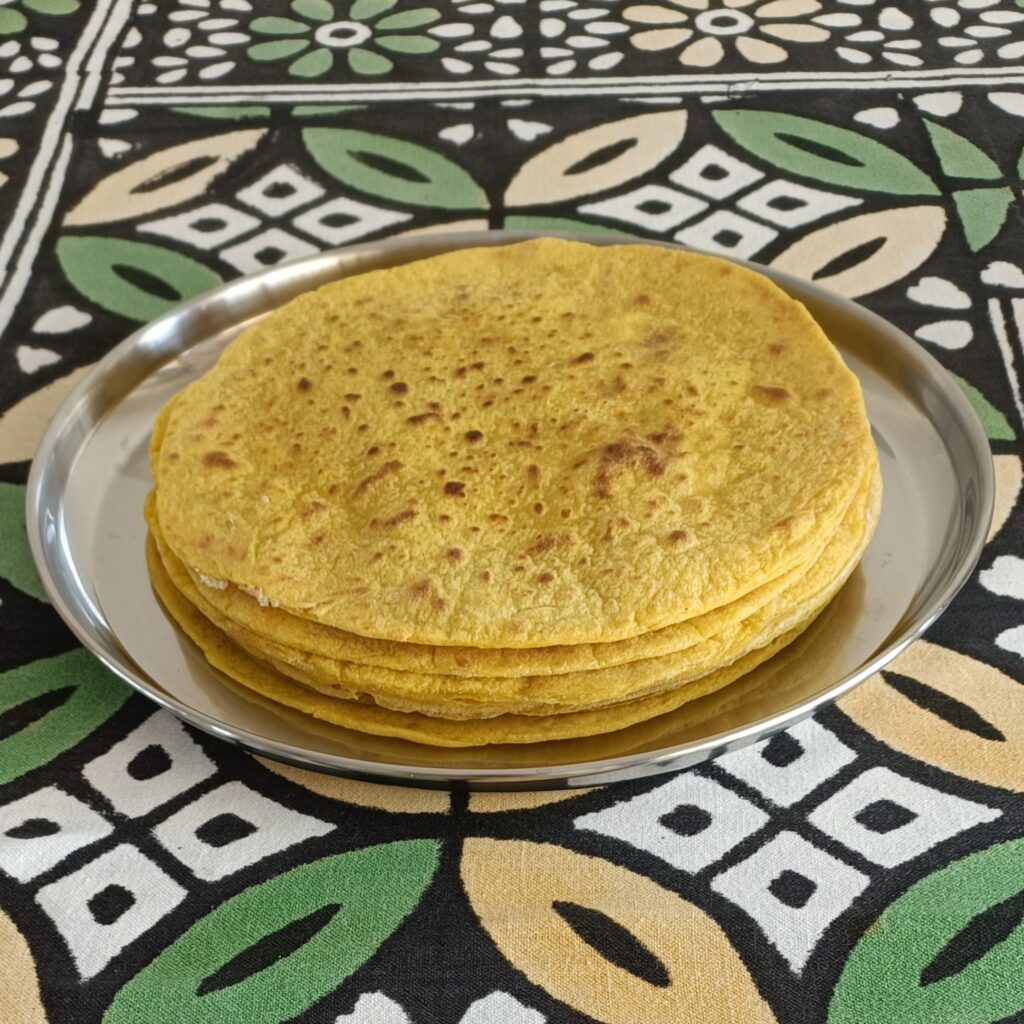
NOTE: These sanjiryos can be kept in an airtight box in the fridge for a couple of days. Warm them on a frying pan before serving.
For the Whole-Food Plant-Based (WFPB) version:
- Dry roast the rawa.
- Add a little more water (about a quarter cup more) and do not dry out the filling completely to keep it moist.
- Use soft dates mashed into a paste in place of the sugar.
- Use whole wheat flour to make the dough.
Share this:
- Click to share on Facebook (Opens in new window)
- Click to share on WhatsApp (Opens in new window)
- Click to share on Twitter (Opens in new window)
- Click to share on Pinterest (Opens in new window)
- Click to share on LinkedIn (Opens in new window)
- Click to share on Reddit (Opens in new window)
- Click to share on Tumblr (Opens in new window)
- Click to share on Pocket (Opens in new window)
- Click to share on Telegram (Opens in new window)
- Click to print (Opens in new window)

